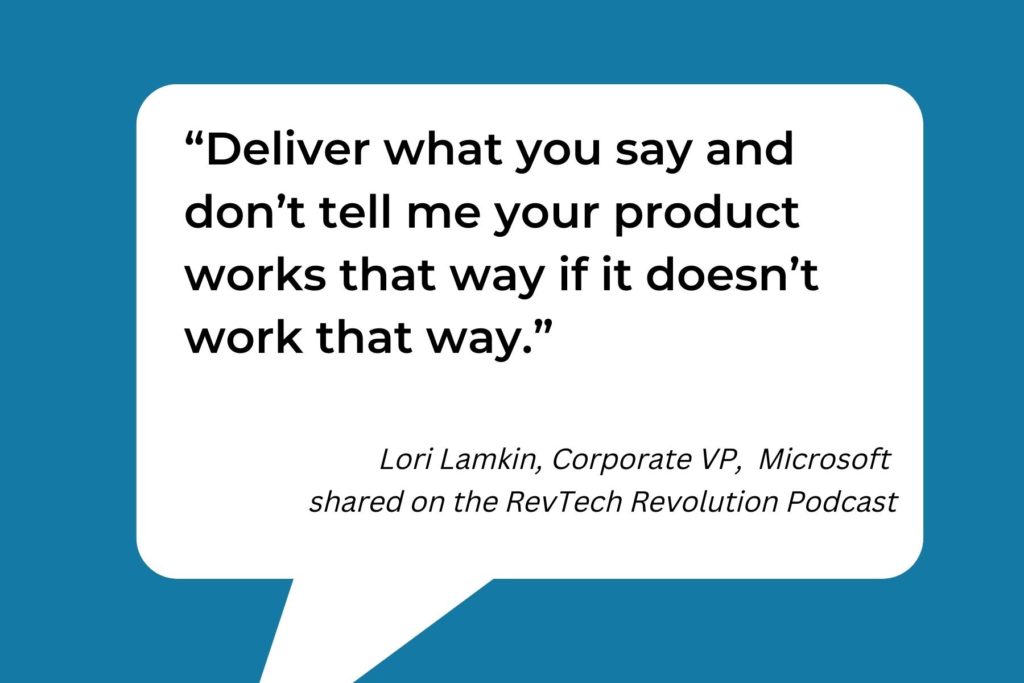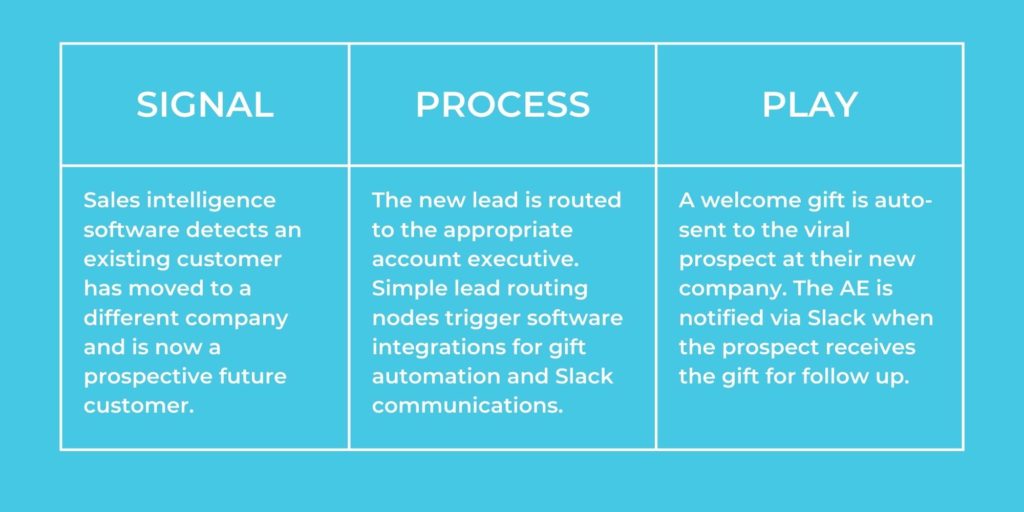“Once a brand loses my trust, there’s no gaining it back,” revealed 67% of adults in Ford Motor Company’s 2020 Trends Report.

It’s no secret that consumers are becoming increasingly skeptical of brands, and SaaS technology is no exception. Trust is the most important element when making a software purchase. As a result, RevTech buyers are constantly on the hunt to determine product truth from product promises.
So if you notice that prospects approach your company in Dwight Schrute investigative mode, there are some legitimate reasons why. And the sad truth is: it’s some bad apple tech sellers’ fault.
Sources of RevTech Buyer Mistrust
It’s not uncommon for RevTech buyers to add new technology to their stack only to find it didn’t work as promised. Not only does this waste money and time, it also impacts the employee’s credibility with their employer. There is a huge professional cost to making a bad tech purchase.

One Revenue Director shared in confidence, “When I make a bad tech purchase, I feel like I’ve let my company down.” RevOps professionals are leery of being burned by application turnover.
Another source of buyer mistrust stems from poor interactions with sales reps. In a recent Revenue Generator Podcast, Doug Bell described the fatal imbalance that occurs when a RevTech buyer comes to a demo armed with significantly better information than the SDR or AE selling to them.
RevTech buyers likely have purchased 10 to 15 platforms in their career when an SDR hasn’t purchased any. An educated buyer paired with a less educated seller often taints the experience very early in the process.
To add insult to injury, the mistrust only deepens when reps use aggressive sales techniques. Buyers don’t want to be harassed by sales calls asking them to make a decision before they are ready. It’s annoying — like those people who don’t mute their background audio during Zoom meetings. You know who you are.
Build Trust into the Buying Journey
So let’s turn this ship around. Building trust involves helping customers identify product truth, pre-purchase. This can be done in three specific ways:
#1 Let buyers discover everything they want to discover.
Today’s RevTech buyer will visit software review sites, speak with peers, and research, research, research. In fact, a Gartner study shows only 17% of the buying journey is spent meeting with potential suppliers.
Since the journey is buyer-led, sellers need to make the research experience easy. Consider answering questions through video that you have traditionally left to a sales call. Move the experience of meeting with a sales rep to a later stage of the buying journey. Don’t make the sales team gatekeepers of information your buyers want.

#2 Offer access to your platform pre-purchase.
Whether it’s a free trial, a freemium product, sandbox account, or proof of concept (POC), let buyers determine for themselves if your product works for their business. It’s the hallmark of the product-led growth (PLG) strategy: allow buyers to completely ignore you and have a product experience that’s unguided.
If you don’t offer some kind of product access pre-purchase, you may lose the opportunity to interact with your prospect altogether. New companies like TestBox allow buyers to play with test SaaS accounts without ever contacting the seller.
#3 Send targeted marketing content at the right time.
Marketing should be catered to a person and company based on where they are in the buyer journey. Every buyer takes a different path, one that is often non linear. Intent data, AI, and machine learning will help you know what to do for each individual customer. Revenue orchestration tools will then help you automate what your customer wants at the moment that it matters to them.
Consider this personalized, customer virality play easily automated through modern revenue orchestration:
Customers for Life
Trust is built over time as you create a digital-first, event-based buying experience. So ditch the megaphone-style, blasting email campaigns and ill-timed sales calls. Figure out how to solve your buyer’s problems and bloody hell, keep your word.
Your buyer wants a partner they can trust for the long haul. Be a trusted partner, and your one-and-done buyer becomes a lifetime customer.









